
Imagine being able to control your home’s temperature with just a few taps on your smartphone, while drastically cutting down your energy bills at the same time. In “The Ultimate Guide to Maximizing Energy Savings with Smart Thermostats,” you will discover the key strategies and tips to get the most out of this innovative technology. Learn how to optimize your heating and cooling schedules, take advantage of advanced features, and make informed decisions that will help you save both energy and money. Get ready to revolutionize your home’s comfort and efficiency with the power of smart thermostats.
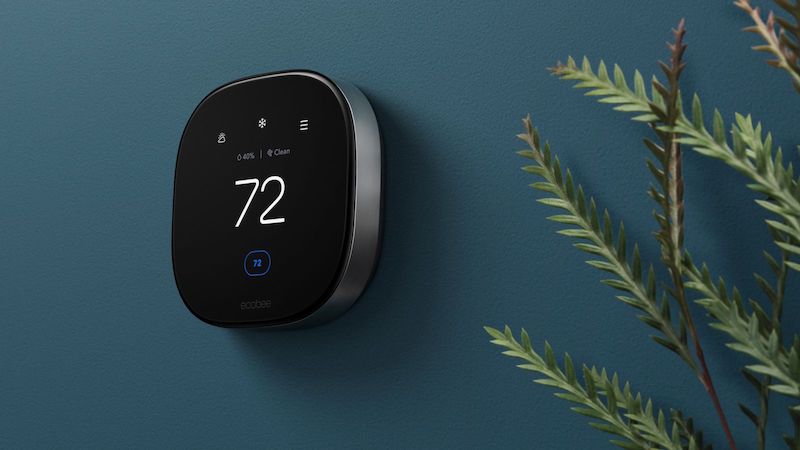
This image is property of roboticsandautomationnews.com.
1. Understanding Smart Thermostats
1.1 What is a smart thermostat?
A smart thermostat is a device that connects to your heating, ventilation, and air conditioning (HVAC) system to regulate the temperature in your home. Unlike traditional thermostats, smart thermostats offer advanced features such as remote access, learning algorithms, and energy-saving modes. They can be controlled using mobile apps, voice assistants, or integrated into smart home ecosystems.
1.2 How do smart thermostats work?
Smart thermostats work by monitoring the temperature in your home and making adjustments based on your preferences and schedule. They use sensors to detect occupancy and proximity, allowing them to optimize energy usage. Some smart thermostats also employ learning algorithms to understand your behavior and adapt accordingly. With Wi-Fi connectivity, these devices can receive commands remotely, allowing you to control them from anywhere using your smartphone or other smart devices.
1.3 Benefits of using smart thermostats
Using a smart thermostat offers several benefits that can help you maximize energy savings. Firstly, they provide greater control and flexibility over your HVAC system, allowing you to make adjustments remotely or create energy-saving schedules. Smart thermostats also have features like occupancy sensors and learning algorithms that optimize temperature settings based on usage patterns, resulting in reduced energy consumption. Additionally, the ability to monitor energy usage and receive insights on your smartphone helps you track your energy-saving progress and make informed decisions about your home’s comfort and efficiency.
2. Choosing the Right Smart Thermostat
2.1 Compatibility with your HVAC system
When selecting a smart thermostat, it is essential to ensure compatibility with your HVAC system. Different thermostats support specific heating and cooling systems, such as single-stage, multi-stage, heat pump, or radiant systems. It’s crucial to consult the thermostat’s specifications or contact the manufacturer to confirm compatibility with your existing setup. This way, you can avoid any installation complications or compatibility issues.
2.2 Considerations for wired or wireless installation
Smart thermostats can be installed either by using existing wiring or through wireless connectivity. If you have an older home with compatible wiring, you may opt for a wired installation, which provides a consistent power supply to the thermostat. However, if you don’t have the necessary wiring or prefer a DIY setup, wireless thermostats are a suitable option. These devices use batteries or rechargeable power sources and can be easily installed and placed anywhere in your home.
2.3 Additional features to look for
When choosing a smart thermostat, consider the additional features that may enhance energy efficiency and convenience. Look for features such as occupancy sensing, which adjusts settings based on whether someone is present, and proximity sensors, which anticipate your return home. Compatibility with voice assistants, like Google Assistant or Amazon Alexa, can also make controlling the thermostat more convenient. It’s also worth considering whether the thermostat offers integration with other smart home devices, as this can enhance your overall home automation experience.
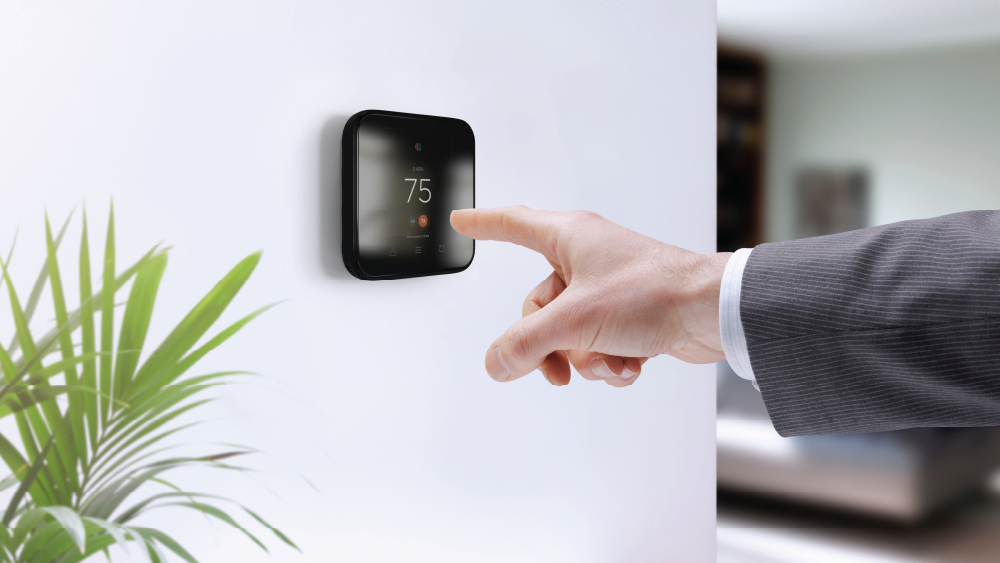
This image is property of cielowigle.com.
3. Installation and Setup
3.1 Steps for installing a smart thermostat
Installing a smart thermostat typically involves a few simple steps. Start by turning off the power to your HVAC system from the circuit breaker to ensure safety. Remove your old thermostat carefully and take note of the wire labels and their corresponding terminals. Follow the provided instructions to connect the wires to the corresponding terminals on the new smart thermostat. Once the wiring is complete, attach the thermostat to the wall and restore power to the HVAC system. Finally, follow the manufacturer’s instructions to complete the setup process, which usually involves configuring Wi-Fi connectivity and basic settings.
3.2 Understanding the wiring process
Understanding the wiring process is crucial for successful installation and setup of a smart thermostat. Older thermostats typically have labeled wires connected to terminals, such as R (power), C (common), W (heat), Y (cool), and G (fan), among others. Newer thermostats may have different labeling conventions, so it’s essential to refer to the manufacturer’s instructions. Make sure to turn off the power before handling any wires and ensure the wires are securely connected to the corresponding terminals on the new thermostat.
3.3 Connecting to Wi-Fi and configuring settings
Connecting your smart thermostat to Wi-Fi allows you to control it remotely and take advantage of additional features. Start by accessing the thermostat’s settings menu, usually through the device’s touchscreen or mobile app. Follow the instructions to connect the thermostat to your Wi-Fi network by entering the network name and password. Once connected, you may be prompted to configure settings such as time and date, temperature units, and geolocation preferences. Completing these settings will ensure accurate control and advanced features like automated energy-saving actions.
4. Smart Thermostat Programming
4.1 Creating an energy-saving schedule
One of the key benefits of smart thermostats is the ability to create personalized energy-saving schedules. Start by considering your daily routines and temperature preferences at different times of the day. With a smart thermostat, you can set different temperature targets for mornings, evenings, and nights, ensuring optimal comfort while minimizing energy consumption. Use the thermostat’s scheduling features to program temperature adjustments based on your occupancy and preferences.
4.2 Setting temperature setbacks and overrides
Temperature setbacks allow you to temporarily adjust the temperature settings when no one is at home or during periods of low activity. This can lead to significant energy savings without sacrificing comfort. Use your smart thermostat’s setback features to lower the temperature during periods when you typically don’t need heating or cooling, such as working hours or at night when everyone is asleep. Additionally, most smart thermostats offer manual override options to temporarily adjust the temperature outside of the programmed schedule, providing flexibility in response to unexpected changes in your routine.
4.3 Utilizing occupancy and proximity sensors
Smart thermostats equipped with occupancy and proximity sensors can further optimize energy usage. These sensors detect whether someone is in the room or nearing your home, allowing the thermostat to adjust temperature settings accordingly. By leveraging occupancy and proximity sensors, your smart thermostat can ensure that energy is not wasted on heating or cooling empty rooms. This feature is particularly useful for households with varying occupancy patterns or if you frequently forget to adjust the temperature manually.
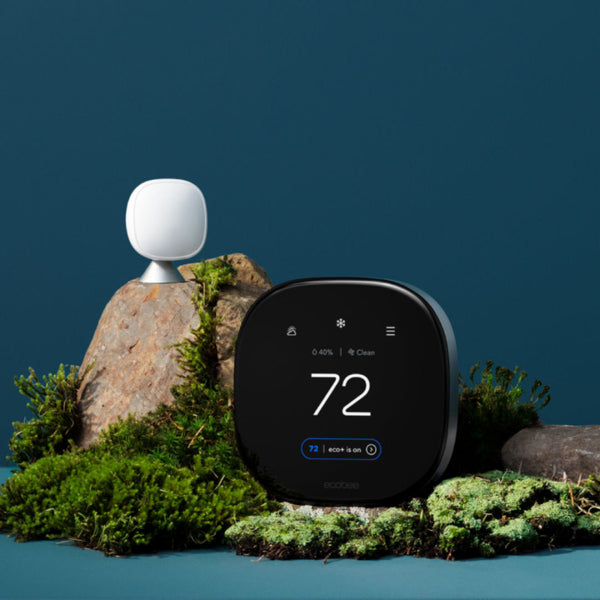
This image is property of cdn.shopify.com.
5. Remote Access and Monitoring
5.1 Controlling your thermostat using mobile apps
Smart thermostats offer the convenience of controlling your HVAC system remotely through mobile apps. Once your smart thermostat is connected to your home’s Wi-Fi network, you can use a companion app on your smartphone to adjust temperature settings, create schedules, and monitor energy usage. Remote access allows you to make real-time adjustments, ensuring your home is comfortable when you arrive and saving energy when you’re away.
5.2 Monitoring energy usage and savings
Smart thermostats provide valuable insights into your energy usage and savings. Through the companion app or web portal, you can access data on your HVAC system’s energy consumption, temperature patterns, and estimated savings. This information empowers you to make informed decisions about adjusting settings and optimizing energy usage. By monitoring your energy usage, you can identify areas for improvement and track your progress towards energy-saving goals.
5.3 Adjusting settings when away from home
Being able to adjust your thermostat settings when away from home is a significant advantage of smart thermostats. Whether you’re at work or on vacation, you can use the mobile app or web portal to ensure your HVAC system is not needlessly running and wasting energy. If your plans change, you can easily override your programmed schedule and adjust the temperature remotely, ensuring your home is comfortable when you return without running the system unnecessarily.
6. Integrating with Other Smart Devices
6.1 Connecting smart thermostats with voice assistants
Many smart thermostats offer integration with popular voice assistants like Google Assistant and Amazon Alexa. This integration allows you to control your thermostat using voice commands, providing a convenient hands-free experience. By simply speaking commands like “set the temperature to 72 degrees” or “turn off the thermostat,” you can adjust settings effortlessly and integrate your thermostat into your overall smart home ecosystem.
6.2 Integration with smart home ecosystems
In addition to voice assistants, smart thermostats can be integrated with other smart devices within your home. This means you can create automation routines and trigger actions based on various conditions. For example, you can set your thermostat to lower the temperature automatically when you leave your home and raise it when you return, using geofencing or occupancy sensors. By integrating your thermostat with other smart devices, you can create a truly customized and efficient smart home experience.
6.3 Automating energy-saving actions
When integrated with other smart devices, smart thermostats can automate energy-saving actions throughout your home. For example, you can set your thermostat to communicate with smart blinds or curtains to optimize natural lighting and reduce the need for artificial lighting. You can also coordinate your thermostat with smart plugs or switches to turn off power to appliances or electronics when no one is home. By automating energy-saving actions, you can further maximize your energy efficiency and reduce wasted energy.
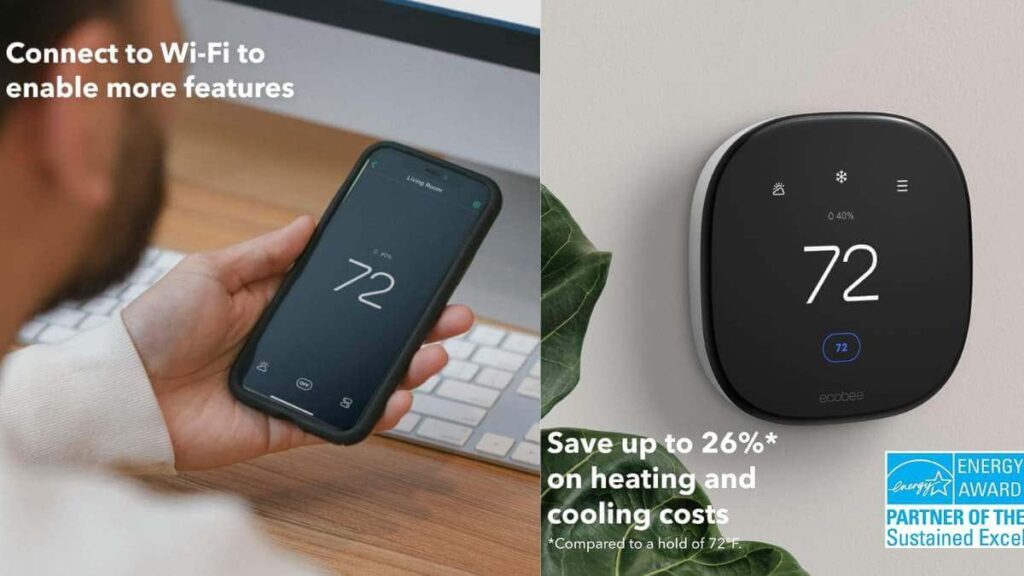
This image is property of miro.medium.com.
7. Advanced Energy-Saving Features
7.1 Learning algorithms and adaptive technology
Some smart thermostats incorporate advanced learning algorithms and adaptive technology. These features enable the thermostat to learn your temperature preferences and usage patterns over time, adjusting settings automatically to optimize comfort and energy usage. By continuously analyzing data and adapting to your behavior, the thermostat becomes more efficient in maintaining a comfortable environment while minimizing energy consumption.
7.2 Geofencing to optimize energy usage
Geofencing is a technology that uses the location of your smartphone to trigger actions when you enter or leave a defined area, such as your home. Smart thermostats can use geofencing to automatically adjust temperature settings based on your location. For example, when you leave your home, the thermostat can set back the temperature to save energy. As you approach your home, it can anticipate your arrival and adjust the temperature to your preferred settings. Geofencing helps optimize energy usage without requiring manual intervention.
7.3 Energy reports and insights
Smart thermostats often provide energy reports and insights to help you understand your energy usage habits and identify opportunities for improvement. These reports may include details such as daily, weekly, or monthly energy consumption, estimated savings, and comparisons with past periods. Energy insights can help you identify trends and make informed decisions about adjusting your thermostat settings, implementing further energy-saving measures, or evaluating the impact of lifestyle changes on your energy usage.
8. Smart Thermostats and Zoning Systems
8.1 Understanding the concept of zoning
Zoning is a technique used to divide your home into separate areas or “zones” that can be individually controlled for heating and cooling. Each zone has its own thermostat, allowing occupants to set different temperature preferences based on their needs. Zoning is particularly useful in larger homes with multiple floors or areas that have different temperature requirements. By using smart thermostats in conjunction with zoning systems, you can optimize comfort and energy efficiency by directing heating and cooling efforts only where needed.
8.2 Benefits of combining smart thermostats with zoning
Combining smart thermostats with zoning systems offers several benefits. Firstly, it allows for personalized control over different zones, ensuring each area of your home is at the desired temperature. This can result in increased comfort and reduced energy waste. Additionally, smart thermostats provide remote access and advanced scheduling features that can be applied to each zone individually, giving you even greater control and customization options. By integrating smart thermostats with zoning, you can maximize energy savings and create a comfortable environment throughout your home.
8.3 Installing and programming zoning systems
Installing a zoning system involves dividing your home into separate zones and installing dampers in the ductwork to control airflow to each zone. The number of zones and the overall design of the system will depend on the layout and needs of your home. It is recommended to consult with a professional HVAC contractor to determine the best zoning system for your home and ensure proper installation. Once the zoning system is installed, each zone can be paired with a smart thermostat, allowing you to program temperature settings and take advantage of the advanced features offered by smart thermostats.
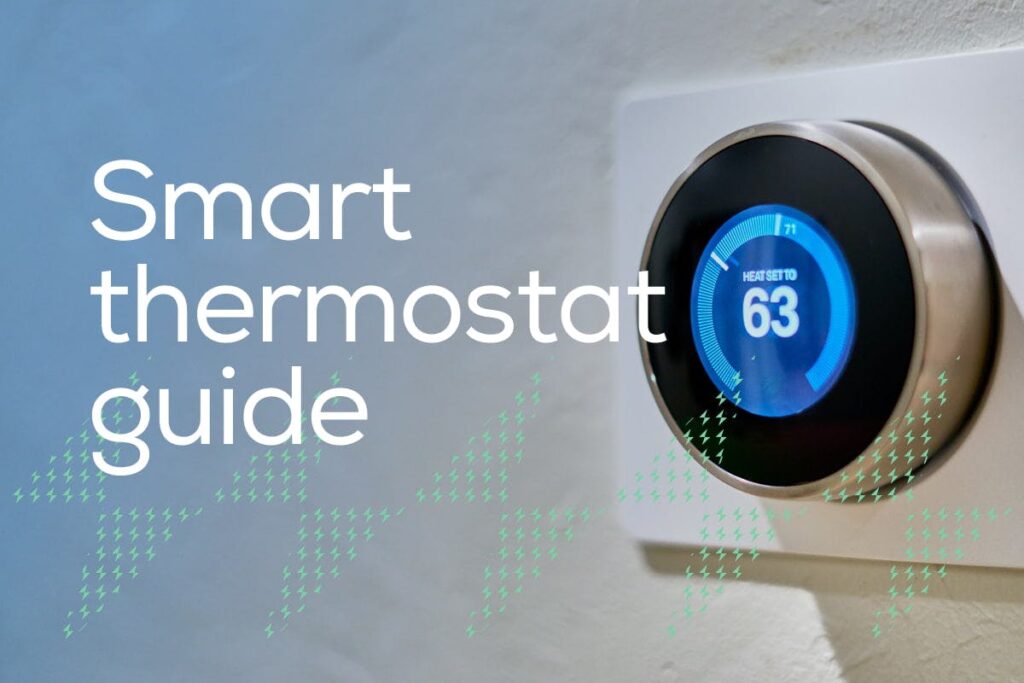
This image is property of images.prismic.io.
9. Using Energy-Saving Modes
9.1 Eco mode and energy-saving presets
Many smart thermostats come equipped with energy-saving modes such as “eco mode” or pre-programmed energy-saving presets. These modes are designed to maximize energy efficiency by automatically adjusting temperature settings based on predetermined guidelines. Typically, eco mode prioritizes energy savings over immediate comfort, allowing the thermostat to make temperature adjustments that can lead to reduced energy consumption. By utilizing these energy-saving modes, you can effortlessly save energy without compromising your overall comfort.
9.2 Vacation and away modes
Vacation and away modes are specific settings that help conserve energy when you’re not at home for an extended period. By activating the vacation or away mode, you can set the thermostat to maintain a minimum temperature to prevent freezing or excessive heat, avoiding unnecessary energy usage. These modes are particularly useful when you’re on vacation or away from home for an extended period, ensuring that your HVAC system operates efficiently in your absence.
9.3 Smart response and adaptive recovery
Smart response and adaptive recovery are features found in some smart thermostats that optimize comfort without excessive energy usage. Smart response anticipates changes in temperature settings based on your programmed schedule, preheating or precooling your home to reach the desired temperature by the scheduled time. Adaptive recovery, on the other hand, learns how long it takes to reach the desired temperature and adjusts the HVAC system to reach it precisely at the scheduled time, reducing the need for the system to run for extended periods.
10. Maintenance and Troubleshooting
10.1 Cleaning and checking your smart thermostat regularly
Regular maintenance and cleaning are essential to ensure your smart thermostat functions correctly. Clean the visible components of the thermostat, such as the screen and buttons, with a soft, dry cloth. It’s important to avoid using water or cleaning solutions on the device. Additionally, periodically check the wiring connections to ensure they are secure and there are no loose or damaged wires. By routinely inspecting and cleaning your smart thermostat, you can prevent any potential issues and ensure optimal performance.
10.2 Troubleshooting common issues
If you encounter any issues with your smart thermostat, there are some common troubleshooting steps you can take before seeking professional assistance. Start by checking the power supply and ensuring that the thermostat is properly connected to the HVAC system. Verify that the Wi-Fi connection is stable and that your home network is functioning correctly. If you continue to experience problems, consult the manufacturer’s troubleshooting guide or contact their customer support for assistance.
10.3 Getting professional assistance
If you’re unable to resolve an issue with your smart thermostat or if your HVAC system requires maintenance, it’s best to seek professional assistance. Certified HVAC technicians have the expertise and knowledge to diagnose and repair any issues with your thermostat or HVAC system. They can also provide routine maintenance services to ensure optimal performance and energy efficiency. If you’re unsure about any aspect of your smart thermostat or require technical assistance, reaching out to a professional is always a safe and reliable option.
In conclusion, smart thermostats offer a range of features and benefits that can help you maximize energy savings and improve the comfort of your home. By understanding how these devices work, choosing the right thermostat for your HVAC system, and utilizing their advanced features, you can create personalized energy-saving schedules, control your thermostat remotely, and integrate it with other smart devices in your home. By taking advantage of energy-saving modes, zoning systems, and advanced features, you can optimize your energy usage and reduce utility costs while maintaining a comfortable living environment. Remember to perform regular maintenance and seek professional assistance when needed to ensure your smart thermostat operates efficiently and effectively. With the right knowledge and tools, you can make the most of your smart thermostat and maximize energy savings in your home.





